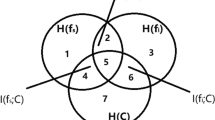Abstract
With the improvement in resolution, more and more useful information is contained in the space of remote sensing images, which makes the processing of remote sensing data become more complex, and it is easy to cause the curse of dimensionality and the poor recognition effect. In this paper, a remote target recognition approach named AJRC is proposed, which uses joint feature dictionary for sparse representation based on different feature information for adaptive weighting. Firstly, the features of the images are extracted to calculate the contribution weight of each eigenvalue in sparse representation, and each eigenvalue contribution weight is calculated in sparse representation. Through the adaptive method, the contribution ability of each feature value in sparse representation is strengthened, and new atoms are formed to construct feature dictionary, which makes the dictionary more discriminative. Then, the common features of each category image and the private features of a single image are extracted from the feature vector, and a joint dictionary is formed to represent the test image sparse and recognize the output of the target. Aiming at the problem that the target visual contrast difference, the low resolution and the rotation of the target with different angles, the experiment is carried out by different feature extraction methods. At the same time, we use the PCA method to reduce the feature dictionary in order to avoid dimensionality. Experiments show that compared with the existing SRC method and JSM method, this method has better recognition rate.











Similar content being viewed by others
References
Candes, E. J., & Romberg, J. (2006). Quantitative robust uncertainty principles and optimally sparse decompositions. Foundations of Computational Mathematics, 6(2), 227–254.
Cui, M., & Prasad, S. (2013). Multiscale sparse representation classification for robust hyperspectral image analysis. In IEEE global conference on signal and information processing (pp. 969–972). IEEE.
Jia, S., Shen, L., & Li, Q. (2015). Gabor feature-based collaborative representation for hyperspectral imagery classification. IEEE Transactions on Geoscience and Remote Sensing, 53(2), 1118–1129.
Karine, A., Toumi, A., & Khenchaf, A., et al. (2016). A non-Gaussian statistical modeling of SIFT and DT-CWT for radar target recognition. In IEEE international conference on computer systems and applications.
Lin, K., Xu, Y., & Zhong, Y. (2010). Using 2DGabor values and kernel fisher discriminant analysis for face recognition. In IEEE international conference on information science and engineering (pp. 7624–7627).
Liu, H., & Hou, X. (2012). The precise location algorithm of license plate based on gray image. In 2012 International conference on computer science and service system (pp. 66–67).
Mallat, S. G. (1989). A theory for multiresolution signal decomposition: The wavelet representation. IEEE Transactions on Pattern Analysis and Machine Intelligence, 11(7):674–693.
Nagesh, P., Li, B. (2009). A compressive sensing approach for expression-invariant face recognition. In IEEE conference on computer vision and pattern recognition, 2009 (pp. 1518–1525). CVPR 2009, 2015.
Wright, J., Yang, A. Y., Sastry, S. S., et al. (2008). Robust face recognition via sparse representation. IEEE Transactions on Pattern Analysis and Machine Intelligence, 31(2), 210–227.
Wu, Q., Sun, H., Sun, X., et al. (2014). Aircraft recognition in high-resolution optical satellite remote sensing images. IEEE Geoscience and Remote Sensing Letters, 12(1), 112–116.
Yang, B., & Li, S. T. (2010). Multifocus image fusion and restoration with sparse representation. IEEE Transactions on Information Theory Instrumentation and Measurement, 59(4), 884–892.
Yuan, L., Li, F. (2017). Face recognition with occlusion via support vector discrimination dictionary and occlusion dictionary based sparse representation classification. In Chinese association of automation (pp. 110–115). IEEE.
Author information
Authors and Affiliations
Corresponding authors
About this article
Cite this article
Wang, W., Chen, J., Li, J. et al. Remote Targets Recognition Based on Adaptive Weighting Feature Dictionaries and Joint Sparse Representations. J Indian Soc Remote Sens 46, 1863–1870 (2018). https://doi.org/10.1007/s12524-018-0836-5
Received:
Accepted:
Published:
Issue Date:
DOI: https://doi.org/10.1007/s12524-018-0836-5




